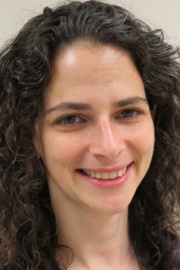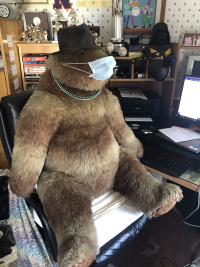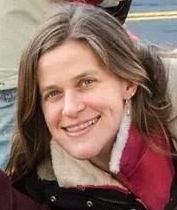Remote learning in the age of COVID-19
Faced with the challenge of maintaining high-quality education while teaching online, professors are adapting and innovating -- everything from take-home tests to sharing pictures of their teddy bears.

With most of higher education taking place online, professors all across the country are asking: How do you teach via Zoom?
It may involve leading a discussion with dozens of students, each in their own, separate video box with the likelihood they will end up talking over one another. Or conducting a science laboratory without a lab, or teaching musical performance with all the musicians at home.
And how do you provide the emotional support and sense of community many students crave right now?
As Brandeis faculty seek to maintain the highest quality education under extraordinary circumstances, they are improvising, innovating and pioneering new pedagogical methods.
They are sending students into Zoom breakout rooms to conduct small-group discussions; administering take-home and open-book exams; using online quizzes and Google Forms to test students' grasp of readings and lectures; and reaching out to students through one-on-one video conversations.
Some professors have tried to provide a sense of community by asking their students to send in pictures of their home workspaces, or foods they're cooking. Professor of psychology Ellen Wright cheered up her class by showing them a teddy bear wearing a face mask.
Brandeis has also revised its academic policy for the semester so students getting a C- or higher grade can take the class pass/fail.
"We are still in unchartered waters," said Alain Lempereur, the Alan B. Slifka Professor of Coexistence and Conflict at the Heller School for Social Policy and Management. "We need to reinvent a new way of connecting to each other."
Faculty strategies to enhance remote learning are big and small, serious and fun.
Devising -- and explaining -- a vaccine
For her advanced cell biology class, associate professor of biology Avital Rodal developed a new lecture on COVID-19. Since she knew the students were at home with family, she included some advice on communicating science to a lay audience.

Avi Rodal
On her take-home, open-book midterm, one question asked the students to describe “the cell biological mechanism of action of one potential antiviral treatment for COVID-19 that seems particularly promising to you."
Answering the question required a deep-dive into the science behind coronavirus treatments, but Rodal added this challenge: "Write 1-2 sentences for nonscientists describing how this drug would work. Pick a specific person (a parent, a friend, a grandparent, a politician) and let me know who your audience is."
Sample answers included these:
"I would explain to my mother that the drug of interest prevents the early endosome, which is where the virus is originally housed inside the cell, from changing. By keeping the endosome in its immature state, the virus cannot take advantage of enzymes that an older endosome would have, and it would stay trapped, unable to infect the cell."
"If I were to explain the drug mechanism to my mom, then I would say that for a virus to spread among cells, it has to be cleaved by a protein scissor to fuse with the cellular material. Now, we have a drug that makes the protein scissor unable to function, so the virus will no longer be released into the cell, thus, slowing the infection rate."
Light-hearted whimsy
As part of her regular check-in with students, associate professor of psychology Ellen Wright asks how they are coping.
She set up a Google Form with questions like, “Anything big going on that I should know about? Or just tell me something I don't already know about you” and “Is there anything I can do to help make life/things better for you?”

Wright, who teaches a class on personality and another on sex differences, got a variety of answers. Some students said they felt happy to be with family or grateful that they weren’t sick. But others said they were feeling sad and a bit lonely.
One student asked Wright on the Google Form if she had a pet. Wright doesn’t, but her husband used to own a toy store that sold teddy bears.
She dressed them up with the face masks she wears outside. "A little light-hearted whimsy lifted our spirits a bit," she said.
Getting outside
In her conservation biology class, associate professor of ecology Colleen Hitchcock normally has students document animal and plant species in Waltham as part of the Brandeis Bioliteracy Project.
This semester, the students identified flora and fauna near their homes, using iNaturalist, a popular nature app that helps users identify species and allows them to record their observations.
Hitchcock also invited alumni and other students to participate. Members of the Brandeis community reported seeing a North American porcupine, a frigatebird from the tropics, an American black bear footprint and, of course, lots of different squirrel species.
"Our project, which had been focused on documenting species in Waltham, has become one where students are sharing what they are seeing around the world," Hitchcock said. "It is really wonderful to see how students are embracing the healing power of nature to get outside and observe."
Mangia and managerial accounting
When she got the sense that the students in her Managerial Accounting class were missing campus life, Brenda Anderson decided community-building exercises were needed. She asked students to share photos of their home workspaces.
"I had about a 70% participation rate in a class of 50, and it was more than fabulous," said Anderson, a faculty member at both the Heller School for Social Policy and Management and the Brandeis International Business School. "Some were serious, some funny, and we had a few pets and home-cooked food items. Students loved it!"
She followed up by requesting images of food and recipes they were cooking at home, and compiled them into a PowerPoint presentation titled, "Presenting The Finer Culinary Talents of Our Managerial Accounting Experts!" It featured cinnamon rolls, flatbread and refried beans, pizza, guatemalan enchiladas, bagels with gravlax and toasted feta, mandazi (a kind of African beignet) and home-baked pet treats.The final slide read: "Now, as my wonderful, dear father in law used to say … Mangia!!!"
Public speaking in private
Under normal circumstances, students in Jennifer Cleary’s public speaking class deliver an 8-minute persuasive talk in person. This semester, they had no choice but to make video recordings of their presentations and share them with the class.

Jennifer Cleary
Delivering a speech in person has huge advantages, said Cleary, a senior lecturer in theater arts. The students "feed off the energy of the audience," she said.
Through her expression and gestures, she can also provide real-time feedback that students find helpful and encouraging.
But there are benefits to video recording yourself as well. Students need to set their own lighting and backdrop. They get to see what they look like on video, Cleary said.
The public speaking assignment required students to create a PowerPoint presentation in which they displayed slides as well as showed themselves speaking. "Learning to present yourself on video is a very important skill, too," Cleary said.
Online teaching has made her even more aware of her students’ diverse home lives. Some have slow internet, while others live in apartments with family sharing the same space during class time. Still other students remain on campus because they can't return to their homes.
Cleary checks in with students at the start of class.
"I ask how they're doing, what's going on in their lives – some sort of human connection that allows them to know I am here and support them," she said. "I feel humbled to be in those conversations with them."
To read about other faculty members’ experiences teaching remotely, visit Preparing for Teaching Continuity | Center for Teaching and Learning.
Categories: General, Student Life





